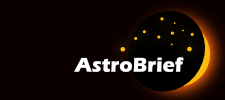Few space images are as iconic as those of the Horsehead Nebula. Its shape makes it instantly recognizable. Over the decades, a number of telescopes have captured its image, turning it into a sort of test case for a telescope’s power.
The JWST has them all beat.
The Horsehead Nebula is about 1300 light-years away in Orion. It’s part of the much larger Orion Molecular Cloud Complex. Horsehead is visible near the three stars in Orion’s Belt in a zoomed-in image.

The leading image shows JWST’s view of the Horsehead Nebula alongside two other views. The Euclid image was captured in November 2023. Euclid features a wide-angle, 600-megapixel camera, and its primary job is to measure the redshift of galaxies and the Universe’s expansion due to dark energy. It took Euclid about one hour to capture the image, showcasing the telescope’s ability to gather highly detailed images quickly.
The Hubble captured its image in 2013 and was released as the telescope’s 23rd-anniversary featured image. The venerable Hubble does a good job of revealing structures hidden by dust. There’s nothing left to say about the Hubble that hasn’t been said already. It’s the revered elder among telescopes, and if you feel no reverence towards it, its contribution to science, and the people responsible for it, you may have a bad case of ennui.
The third image is a new one from the JWST’s NIRCam instrument. It’s described as the sharpest image of the Horsehead ever taken. It shows a small part of the iconic nebula in detail we don’t usually see. The JWST is so powerful it even shows background galaxies.

The Horsehead Nebula is the result of stellar erosion. The nebula itself was formed by a collapsing cloud of material, and a nearby hot star called Sigma Orionis illuminates the structure. The nebula is denser than its surrounding gas and has resisted the dissipative energy of the star, while the gas that used to surround it is long gone.
This definitely isn’t the last we’ll see of Horsehead. New, powerful telescopes coming online soon, like the Giant Magellan Telescope and the European Extremely Large Telescope will likely take a crack at the nebula. Prepare to be wowed.
There’s no rush. According to astronomers, the Horsehead Nebula will eventually be eroded away, too, but not for another five million years or so.
